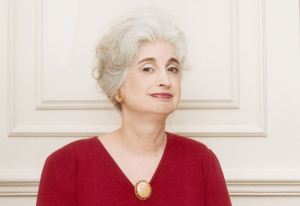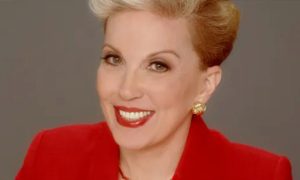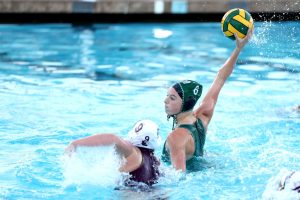A teacher for a transitional kindergarten students in the Cupertino Union school district was placed on leave after discussing gender identity in the classroom, sparking outrage among parents and embroiling the district in a national debate over the instruction of gender and sexuality in public schools.
During a school board meeting last month, parents complained that a teacher at Dilworth Elementary School, who identifies as nonbinary and uses gender-neutral pronouns, spoke to their four-year-old students about gender identity and expression, had LGBTQ+ books and posters in their classroom that featured gender concepts such as “ze and tree” pronouns, and told students “boys can wear dresses.”
Parent Qina Sa said she unenrolled her 4-year-old son after discovering he was learning about complex gender topics.
“They’re less than 5-years-old,” Sa said at a recent board meeting. “At this young age, children are still developing their fundamental language skills and cognitive abilities. Introducing such advanced gender fluidity concepts could create confusion rather than helping them learn.”
The tension comes amid recent legislation that has sought to prevent discrimination in schools and protect LGBTQ+ students, including a controversial state law that stops school districts from requiring teachers to notify parents if their child uses different pronouns or identifies as a different gender than what’s on their school record. And a recent change to federal sexual harassment laws extends protections to include sexual orientation and gender identity as prohibited discrimination.
The Cupertino Union district, in an October statement to this news organization, said it had became aware of parents’ concerns in August and staff took immediate steps to review the situation. The district said while it is unable to comment on personnel matters, the teacher has been placed on leave amid the review. The teacher has not been identified by the district.
But several other educators spoke out in support of teacher at the board meeting and the need for inclusive classrooms. The district’s teachers union has also backed the teacher and sought clarification from the district on LGBTQ curriculum policies.
In Florida and Louisiana, educators are restricted from teaching gender identity or sexual orientation, but seven states, including California — which became the first state to require LGBTQ+ inclusive curriculum with a 2011 law that mandates public schools teach gay history — require LGBTQ+ curriculum.
But LGBTQ+ issues have ensnared a handful of Bay Area school districts as they navigate the balance between academic freedom, parental rights and inclusivity in schools, particularly for young children.
Most recently, Palo Alto Unified faced its own controversy over concerns with an elementary school’s bathrooms and plans to implement all-gender restrooms at schools in the district.
San Jose Unified School District also managed concerns over gender-neutral spaces after students and teachers at San Jose High School pushed for the creation of a gender-neutral locker room amid transgender and nonbinary students’ complaints of feeling unwelcome at school. According to the Williams Institute, a research center that studies gender identity, about 1.9% of young Californians aged 13-17 identify as transgender.
And this summer, two school board members in Sunol Glen Unified School District were recalled after they voted to ban all non-governmental flags, including the Pride flag, last fall.
While the California Department of Education offers course frameworks and content standards to guide schools on what students should know at each grade level, local districts and school boards adopt their own curriculums.
In a message to Dilworth families, Cupertino Union Superintendent Stacy Yao said lessons and materials on sexual orientation and gender identity in transitional kindergarten (TK) classes, those that prepare students for kindergarten, are not approved by the district.
“Based on state guidance, these topics are not age-appropriate for TK students and are not taught,” Yao said.
However, the district said in its statement that while teaching methods and materials are expected to align with the district’s policies, classroom decorations should “reflect and celebrate the broad spectrum of diversity found within the district.”
Scott Roark, a spokesperson for the California Department of Education, said state content standards on gender identity and other health class topics only cover K-12 classrooms.
State guidelines on preschool and transitional kindergarten classes encourage teachers to use classroom materials that reflect a “wide variety of races, ethnicities and genders.” Those guidelines indicate students as young as 3-years-old begin to show awareness of their gender identities.
Education lawyer Bradley Flynn said situations like the one in Cupertino Union can quickly become legal nightmares for districts and subject them to complaints of constitutional rights violations — like the right to free speech guaranteed in the First Amendment and the 14th Amendment’s equal rights guarantee — and Title IX laws, which prohibit discrimination in public schools and universities.
“If a teacher is transgender and says that they want to talk about gender expression, I think they’re well within their First Amendment right to do so,” Flynn said. “The flip side to that would be not talking about gender or only talking about gender in very limited circumstances … I think that’s a problem for a school district.”
A rise in conservative, parental-rights advocacy groups, such as Moms for Liberty and Informed Parents of California, have pushed for the removal of certain books and topics of gender and critical race theory in classrooms.
In Cupertino, parents urged the district to limit instruction on “controversial issues” like gender identity depending on “the age and maturity” of students and to allow parents to opt out of any material that does not align with grade-level curriculum objectives.
Related Articles
Santa Clara County board appoints interim superintendent despite community outrage
Los Gatos voters to decide on bond measure for elementary, middle schools
New investigations shed light on firing of Santa Clara County Superintendent of Schools
A tale of two turfs: Bay Area residents split over using artificial grass
SJ school employee paid boys $6,315 to film pornographic videos, sold teen’s underwear online
While the California Department of Education says parents can choose to exclude their children from sexual health education, that’s not true for general instruction or materials relating to LGBTQ+ issues.
And educational lawyer Flynn pointed out that parental rights don’t apply to situations where the civil liberties of other children are impacted.
“We urge the district to communicate to our school communities about the value of inclusive classrooms, as well as the laws, guidelines and frameworks that mandate and enforce their creation,” the teacher’s union said in a statement. “This education is crucial to creating safety in Cupertino Union School District for our LGBTQ students, teachers and families as well as all of our students, teachers and families.”












